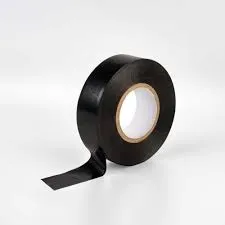Understanding Floor Marking Tape Specifications
In industrial, commercial, and even residential settings, floor marking tape plays a crucial role in maintaining order, safety, and efficiency. As organizations seek to create organized environments that comply with regulatory standards, understanding the specifications of floor marking tape becomes increasingly vital. This article provides a comprehensive look at the key specifications that contribute to the functionality and efficacy of floor marking tape.
1. Material Composition
Floor marking tape is usually made from high-quality materials that ensure durability and longevity. Common materials include vinyl, polyethylene, and other resilient synthetic substances. These materials are chosen for their resistance to wear and tear, ensuring that the tape remains intact even in high traffic areas. Vinyl tape, in particular, is favored for its flexibility and adherence to a variety of surfaces, making it suitable for diverse applications.
2. Adhesive Quality
The adhesive used in floor marking tape is a critical component that affects its performance. High-quality adhesives ensure strong bonding to the floor surface, which is essential to prevent the tape from peeling or lifting. Various types of adhesives have different properties, and selecting the right one is crucial. For instance, some adhesives are formulated for easier removal, while others are designed for long-term use, making them ideal for permanent applications. It's also essential to consider the adhesive’s resistance to chemicals and moisture, especially in environments like warehouses or manufacturing facilities.
3. Width and Thickness
The specifications regarding width and thickness are also significant. Floor marking tapes generally come in various widths, typically ranging from 2 inches to 4 inches, although custom sizes are available for specialized applications. The thickness of the tape can affect its durability; thicker tapes tend to withstand wear better. A commonly accepted thickness for industrial applications is around 0.125 inches. Choosing the right width and thickness is instrumental in ensuring visibility and effectiveness in guiding foot traffic, designated areas, and hazard warnings.
floor marking tape specification

Color-coding is a powerful visual management tool in workplaces. Different colors of floor marking tape signify various meanings, such as safety zones, pathways, and hazardous areas. For example, yellow is often used for caution or warning, while red signifies danger. In environments where visibility is crucial, such as factories, warehouses, or distribution centers, it’s important to use colors that stand out against the floor’s surface. Reflective or glow-in-the-dark options can also enhance visibility in low-light conditions or during nighttime operations.
5. Surface Compatibility
The effectiveness of floor marking tape can also depend on the type of surface to which it will adhere. Certain tapes are better suited for smooth surfaces, while others are designed to adhere to textured or uneven surfaces. Before purchasing, it’s important to consider the specific flooring material, whether it be concrete, tile, or carpet, and consult the manufacturer’s specifications regarding surface compatibility.
6. Temperature and Environmental Resistance
Another specification to consider is the tape's performance under varying environmental conditions. Floor marking tape needs to withstand temperature fluctuations and exposure to moisture without compromising its adhesive quality or structural integrity. Tapes that are rated for outdoor use typically offer enhanced UV resistance and can endure rain and temperature extremes, making them suitable for external applications.
7. Ease of Application and Removal
Lastly, the ease of application and removal should not be overlooked. Floor marking tape should be easy to cut and apply, minimizing downtime during installation. For temporary applications, it should be designed for easy removal without leaving adhesive residue, which is particularly important for rental spaces and events.
Conclusion
In summary, understanding the specifications of floor marking tape is vital for ensuring safety, compliance, and organizational efficiency. From material composition to adhesive quality, color coding, and environmental resistance, each specification contributes to the tape's overall effectiveness. By choosing the right floor marking tape for your specific needs, you can create a safer and more organized environment that meets both regulatory standards and best practices. Always consult product specifications and consider your unique requirements to make the best choice for your floor marking needs.
-
XIANGFAN Rubber Tape-Ultimate Solutions for All Your Insulation NeedsNewsJun.24,2025
-
XIANGFAN Rubber Tape-Protection for Industrial and Residential ApplicationsNewsJun.24,2025
-
XIANGFAN Rubber Tape: Superior Safety and Sealing for Demanding EnvironmentsNewsJun.24,2025
-
XIANGFAN Rubber Tape: Reliable Solutions for Every Electrical ChallengeNewsJun.24,2025
-
XIANGFAN Electrical & Industrial Tape: Powering Reliability Across IndustriesNewsJun.24,2025
-
XIANGFAN Electrical & Industrial Tape: Excellence in Every ApplicationNewsJun.24,2025
